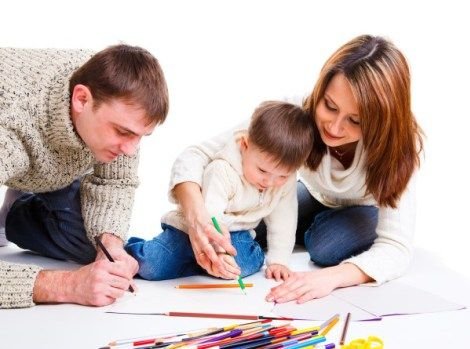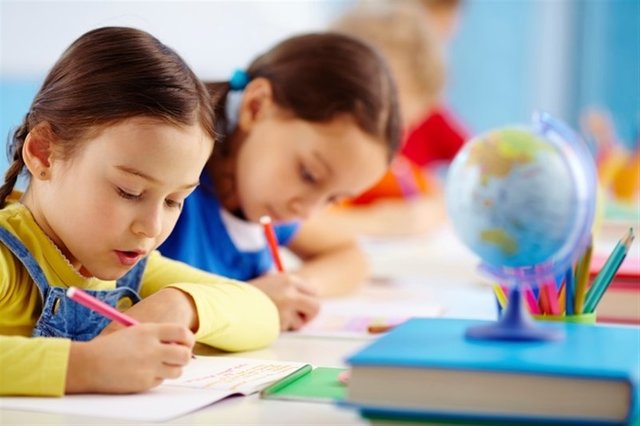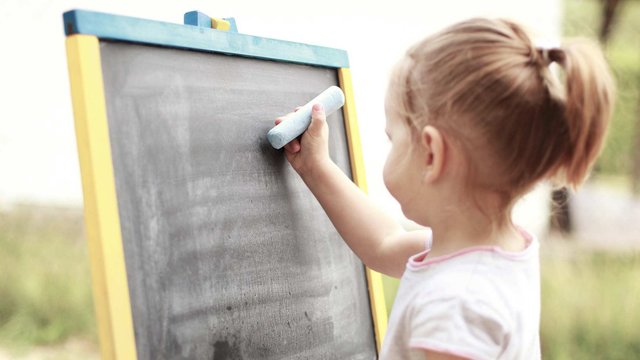Learning to write, exercises for children
In general, writing is considered as a subject, which must be developed in the school. It is true that in reading all parents make our first steps with children, we buy stories, we read them, but in what refers to the didactics of reading, that is, teaching to read, that is a school thing, rare Once a few parents will go beyond the coloring books.
- Forget about the pencil, If we want to facilitate the learning of writing to our children, the best we can do is to teach them to draw, what professionals call pre-writing.
To begin with, forget about the pencil. At least in the strict sense of the word. The grip of a pencil implies a manual dexterity that is rarely obtained after two years. But there are other magnificent instruments.
- The fingers and the hand, the first of all, of course, are the fingers. It is clear that working with finger paint is one of the biggest problems we can think of, but it is worth it when we see how well they spend it and the magnificent results they can achieve.
Then there are the waxes adapted to the hand. They are piston-shaped waxes, which the child can hold with the whole hand without difficulty. They exist in two sizes, one bigger so that the smallest ones take the wax with all the fist and another something smaller that is inviting them to take the wax with the thumb and with only two fingers.
- Free drawing, naturally, the free drawing even if they are scribbles, is fundamental for our son, so, if you can, do not hesitate to give him two or three daily opportunities to paint what he wants.
But if we are thinking more specifically about the drawing directed towards writing, there are a series of traits that are fundamental that we teach them in a progressive way: curved, straight lines.
- Painting standing, come to this point, think positively about the fact that the little one is launched to paint on the walls. It is not that they have a concentrated desire to annoy us, it is that we stand on the ground and have much more adequate postural control to paint than sitting.
Learning to write, therefore, would be easier if we gave our children before reaching school the appropriate instruments and meters and meters of paper. The fundamental thing is the perseverance, better to do it once a day, five days a week, than three times a day two days a week.

source
Strokes, to direct the drawing towards writing, these are the fundamental traits that we can teach them in a progressive way.
Up and down
Left Right
Diagonal
Zig Zag
Semicircles
Circle and C-shaped semicircles
Up to 5 years old, the child will not be able to trace squares or diamonds.
Large size, it is convenient to practice these strokes very often two or three times a day, at first in large size and with very wide limits and little by little to limit the space where they must do it.
Coloring, so that our child will learn to color and draw with some precision that later will be very useful in order to learn to write, we can provide large black and white drawings of simple strokes, to color and learn little to little to not get out of the lines. We can buy books with this type of drawings in the stationery or carry out the drawing and give it to the child.
Large blackboard, we can put a large blackboard hanging on the wall or on an easel so that the child has it and can make the strokes you want.
Painting with a wide brush, it is easier for the child to use a thick brush to make the strokes he is learning. Along with some temperas, you will enjoy doing the exercises and acquiring the necessary capacity to handle writing and painting materials.
Insert, for this exercise we need toys like cubes of different sizes and colors, so you have to introduce the smallest among the largest.
Button buttons, The large buttons of the children's gowns offer the opportunity for our son to exercise the movement of the fingers. Let's encourage the child to only button and unbutton the buttons.
Throw marbles to goals, for this activity, it is necessary the collaboration of one of the parents, who will put his hands in such a position that it looks like a soccer goal, the fingers are intertwined and we support the thumbs vertically on the table; One of the indexes is placed in the middle to act as a goalkeeper. The child has to throw the marble to the goal and get a goal.
Chopped, this exercise consists of making strokes with a punch, the child has to make holes with it on a paper; under this we will put a pad so that the table is not damaged. The best thing is that we provide the child with a drawing so that he can cut it out by piercing the silhouette.


As I was reading this post a thought cropped into my mind. I am teaching grades four to seven English. In my classes there are alarming numbers of learners who can't even write their own names, let alone understand and write in English. It's clear that curriculum is not a factor here but teaching these children the basics of writing in general is. Would you say these steps can be used for children of these age groups?
if friend, use them and you will see.
What is best about these learning techniques is that they are also fun and there is no pressure on a child to do them and parents end up with beautiful pieces of artwork to put up in the home.
is so friend, very important these techniques so that there is also a deep creativity in the life of each child.